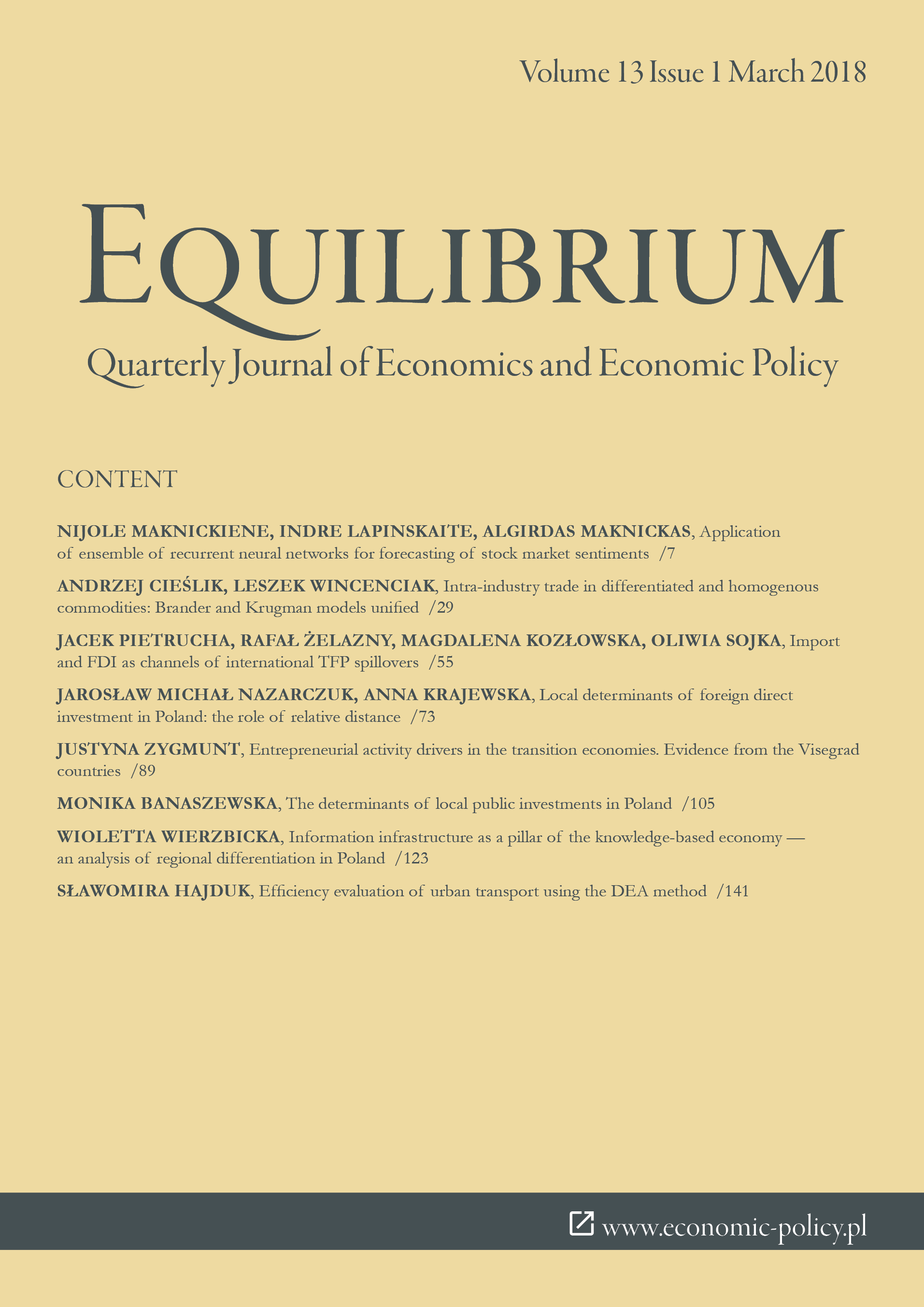Intra-industry trade in differentiated and homogeneous commodities: Brander and Krugman models unified
Intra-industry trade in differentiated and homogeneous commodities: Brander and Krugman models unified
Author(s): Andrzej Cieślik, Leszek WincenciakSubject(s): Economy, International relations/trade, Methodology and research technology
Published by: Instytut Badań Gospodarczych
Keywords: Cournot oligopoly; intra-industry trade; monopolistic competition; reciprocal dumping;
Summary/Abstract: This paper extends the early papers by Brander (1981) and Brander and Krugman (1983) who used a simple partial equilibrium Cournot duopoly to a full general equilibrium setting. The explanations of intra-industry trade can be based either on oligopolistic reciprocal dumping idea (Brander, 1981) or product differentiation (Dixit and Norman, 1980; Krugman, 1979, 1980, 1981; Lancaster, 1980; Helpman, 1981). In this paper we combine both explanations in a unified general equilibrium model. Purpose of the article: We develop a two-sector, one-factor general equilibrium model, in which the first sector produces a differentiated good under monopolistic competition and the second sector produces a homogeneous good under Cournot oligopolistic competition. In this paper, we study how competition between domestic and foreign firms resulting from trade liberalization affects intra-industry trade in both sectors. Methods: The paper develops a two-sector model based on several assumptions. Consumers have a two-tier utility function of the Cobb-Douglas-Spence-Dixit-Stiglitz form. Firms operate in two sectors and produce goods under increasing returns to scale resulting from the existence of fixed costs. One sector produces homogeneous good under Cournot competition, and the second one produces a differentiated product in under Chamberlinian monopolistic competition. Free entry is assumed in both sectors. Labor is assumed to be the only factor of production with perfect mobility and full employment. Findings & Value added: In contrast to previous papers, our study is based on a full general equilibrium Cournot oligopoly framework with many firms. Moreover, we endogenize the number of firms and study the resulting trading equilibria. Therefore, this paper can be regarded as the extension and unification of the early papers by Brander (1981), Brander and Krugman (1983) and Krugman (1979, 1980).
Journal: Equilibrium. Quarterly Journal of Economics and Economic Policy
- Issue Year: 13/2018
- Issue No: 1
- Page Range: 29-53
- Page Count: 25
- Language: English

